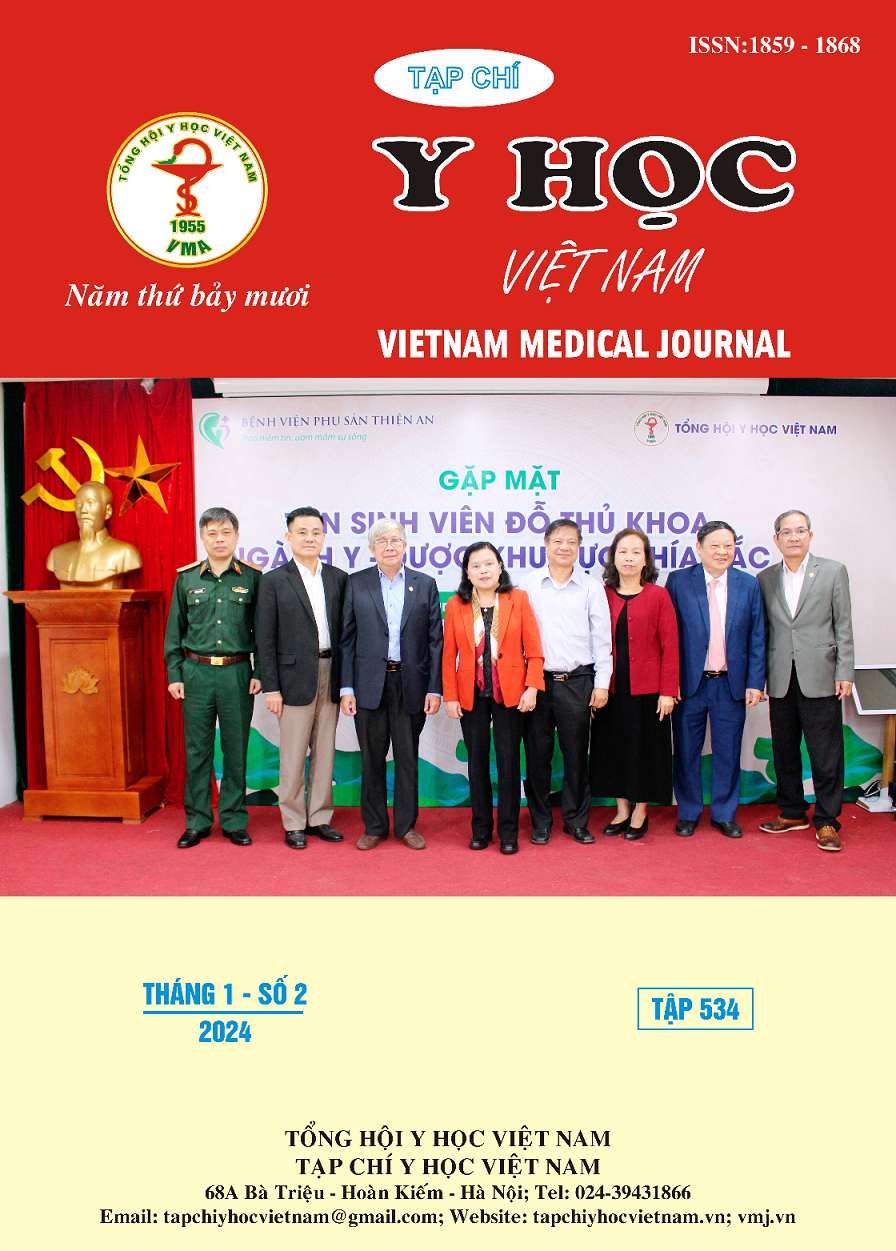CLINICAL MORPHOLOGY AND MICROBIOLOGY OF FUNGAL EXTERNAL EAR TUBE
Main Article Content
Abstract
Objective: Describe the clinical and microbiological morphology of fungal otitis externa at Thai Nguyen General Hospital. Subjects: The study subjects included 50 patients with thyroid cancer diagnosed with fungal otitis externa treated at Thai Nguyen Central Hospital from January 2023 to August 2023. Methods: Tissue study cluster of cases. Results: Average age 54.48. Male rate 58%; female 42%. Clinical symptoms: ear pain (96%), tinnitus (34%), ear pain (34%). Morphology: mostly chronic (82%). Clinical symptoms can provide features: ear and ear pain (100%); Chronic form: drooping ears (100%), full ears (29.3%). Damage is mainly in the ear canal (60%), combined with hearing and ear canal (40%). Heart rate evidence (2%). Color of disease in tubes: Opaque white (60%) of Aspergillus Terreus, black color of Aspergillus Niger (30%), milky color of Candida (10%). Fungal strains: Aspergillus Terreus (50%), Aspergillus Niger (34%) and Aspergillus Flavus (4%), Candida (8%), another (4%). Conclusion: All patients with otitis externa on treatment with equine treatment should establish a predictive fever with pink otitis externa and should have a pink test for prediction.
Article Details
References
2. Adoubryn, K.D. (2013), "Epidemiology of otomycoses at the University Hospital of Yopougon Abidjan-Ivory Coast". J Mycol Med, pp. 134-137.
3. Blanca Regina de la Paz Cota, Pedro Pablo Cepero Vega, Juan José Matus Navarrete (2018), "Efficacy and safety of eberconazole 1% otic solution compared to clotrimazole 1% solution in patients with otomycosis", Am J Otolaryngol. 39(3), pp. 307-312.
4. Huỳnh Khắc Cường (2020), “Acid acetic for otitis externa”, Hội nghị khoa học thường niên 2020. Chuyên đề Tai Mũi Họng và Phẫu Thuật Đầu - Cổ, Nhà xuất bản Y học, Tp. Hồ Chí Minh, tr. 44-54.
5. Nguyễn Tiến Hải (2013), “Nghiên cứu hình thái lâm sàng và đánh giá kết quả điều trị nấm ống tai”, Luận văn tốt nghiệp Bác sĩ nội trú, Đại học Y Hà Nội, Hà Nội, tr. 14-25.
6. Nguyễn Cảnh Lộc (2018),” Nghiên cứu đặc điểm lâm sàng, cận lâm sàng và kết quả điều trị viêm ống tai ngoài”, Luận văn Bác sĩ nội trú, Đại học Y Dược Huế, tr 7-10.
7. Phạm Kim Băng Tâm, Nguyễn Ngọc Vinh, Trần Thị Thu Hà (2019), “Khảo sát tình hình bệnh lý tai mũi họng của bệnh nhân đến khám và điều trị ngoại trú tại Phòng khám Tai Mũi Họng - Bệnh viện Đa khoa Sài Gòn năm 2019”, Bệnh viện Đa Khoa Sài Gòn, Thành phố Hồ Chí Minh, tr. 34-40.
8. Nguyễn Tư Thế, Hồ Mạnh Hùng, Nguyễn Cảnh Lộc (2018),” Nghiên cứu đặc điểm lâm sàng, cận lâm sàng và kết quả điều trị viêm ống tai ngoài” - Tạp chí Y dược học tập 8, số 6, tr. 68-75.


